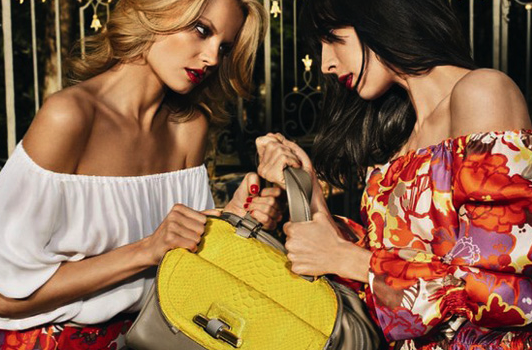E-commerce and Fashion: An Online Battleground
The internet is a busy, competitive place. Online, you can experience success in a flash, or you can spend months or years trying to draw attention to something and receive no more than a handful of traffic, “likes”, and shares. It is not quite all or nothing – many companies float around somewhere in the middle – but there is certainly a lot to play for.
In the world of fashion, competition for authority on the web is heating up. Though the fashion industry may have been a latecomer to the online scene, today the space is saturated.
So who will come out on top?

Well, firstly, who are the contenders? There are two main types.
The first wave of fashion e-commerce sites aimed merely to bring fashion online. Companies such as Yoox and Net-a-Porter aimed to do this from scratch. In response, traditional brick-and-mortar retailers took their online operations more seriously.
These companies generally operate a traditional wholesale business model. They buy in stock, before selling it on to consumers. As such, they take on a high inventory risk as well as large capital requirements.
To avoid these problems, another model emerged: the marketplace. Marketplaces offer products from multiple third-parties, whereas transactions are processed by the marketplace operator. As such, they avoid inventory risk and reduce the amount of capital required to get started.
Broadly speaking, these are the two main fashion e-commerce business models. Startups tend to favour the marketplace model, whereas more established businesses tend to favour the wholesaler model.
Spring, for example, is a new mobile internet marketplace company. It offers a way for consumers to connect directly with brands and buy the items they like from an Instagram-esque feed. It’s a great, easy-to-use platform, and many think that it (as well as its contemporaries) threaten to do away with the idea of buying in stock completely.
However, that certainly doesn’t mean that the wholesalers are done for. Far from it.
Wholesalers often have extremely strong links with labels, hire their own designers, and have a robust brand image. And they are not scared of innovation. Wholesalers have money to invest in new online ventures, and are constantly looking for ways to improve their customers’ experiences and stay ahead of the curve– from omni-channel retailing to creating their own incubators and hubs.
John Lewis, for example, created JLab – the retail accelerator for tech startups. The company offers investment of £12,500 for four percent of the business. It’s a clever tactic, since it keeps John Lewis in the startup loop, and allows them to buy into good ideas as and when they happen. You can find out more about JLab from our breakfast discussion, which Stuart Marks, JLab partner and investor, attended.
Online success will be driven by innovation. Marketplace startups have dynamism, flexibility, and responsivity on their side. More established wholesalers have cash, connections, and customers. Whichever model can use its assets in the most creative way is likely to emerge the winner.
We touched on these issues in our NY fashion tech meets the investors discussion, so be sure to have a read to find out more.
Which business model do you think will dominate fashion e-commerce?
Email us your thoughts.
